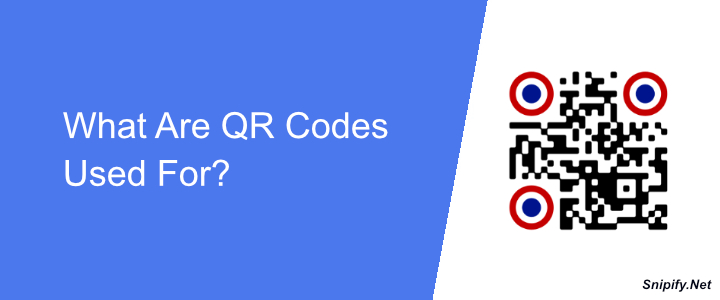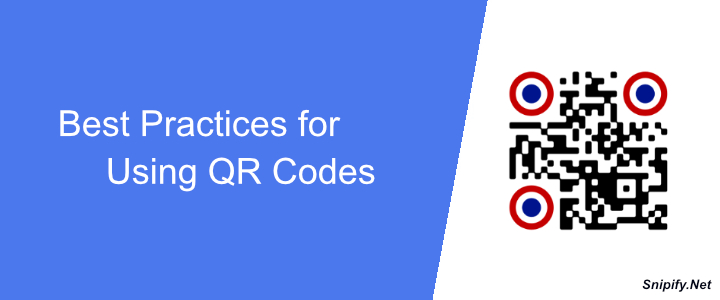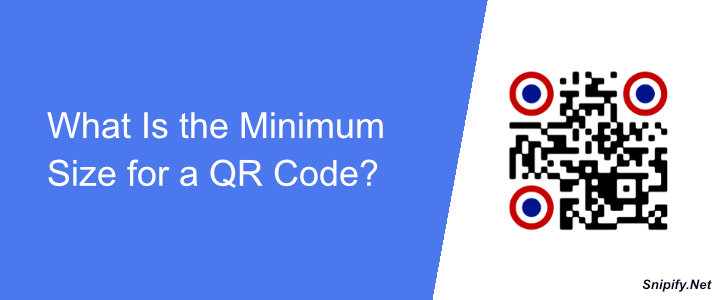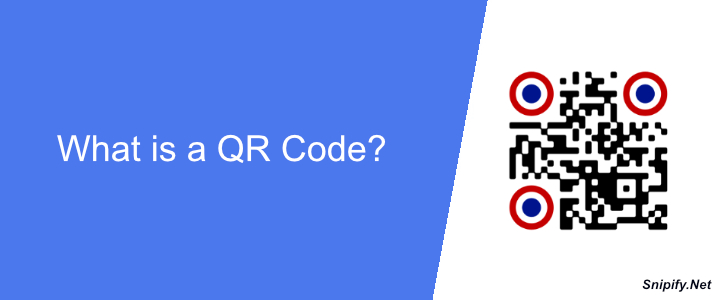
QR codes, those seemingly simple squares, hold immense potential to bridge the gap between the physical and digital worlds. Whether you're just starting out or looking for new applications, this article will give you an insight into their wide range of uses.
Beyond mere data storage, QR codes serve as interactive tools, offering instant access to information with a quick smartphone scan. Businesses use them extensively in marketing, but their applications extend far beyond, enhancing various aspects of our lives.
So, dive deep with us as we explore the some use cases of QR codes and unlock their vast potential!
Product Packaging:
-
Link to detailed product information:
Enhance descriptions by providing access to user manuals, recipes, or care instructions. (Example: A furniture brand could link to assembly instructions)
-
Unlock exclusive content:
Offer bonus recipes, hidden messages, or loyalty program enrollment through QR codes. (Example: A coffee brand could offer a discount code for subscribing)
-
Direct to online stores:
Simplify purchases by directing customers directly to your online store or product page. (Example: A clothing brand could link to the specific item page)
Marketing Materials:
-
Business cards:
Ditch paper cards and share contact information with a vCard QR code, readily saving details to smartphones. (Example: A freelancer could include a QR code on their business card)
-
Brochures and flyers:
Generate leads and drive traffic to your website by linking to landing pages or social media profiles. (Example: A restaurant could link to their online menu or reservation page)
-
Posters and billboards:
Increase engagement and reach a wider audience by directing them to relevant websites or social media campaigns. (Example: A movie poster could link to the trailer)
Interactive Experiences:
-
Augmented reality (AR) experiences:
Overlay digital elements onto the real world, offering interactive product demos or engaging games. (Example: A toy company could showcase how their product works in AR)
-
Treasure hunts and scavenger hunts:
Create interactive experiences by hiding QR codes in various locations, leading participants on a fun exploration. (Example: A museum could hide QR codes throughout exhibits, revealing additional information)
-
Interactive product displays:
Enhance physical stores by offering detailed product information or activating interactive features through QR codes. (Example: An appliance store could show product specifications or user reviews)
Streamlining Processes:
-
Event registration and access:
Simplify event registration by allowing attendees to sign up or download tickets through QR codes. (Example: A concert venue could use QR codes for ticket scanning and entry)
-
Wi-Fi access:
Share your Wi-Fi network details securely and conveniently by providing a QR code for guests or customers to connect. (Example: A coffee shop could offer a QR code for free Wi-Fi access)
-
Contactless menus:
Promote hygiene and offer interactive menus in restaurants by allowing customers to access them through QR codes. (Example: A restaurant could link to their digital menu with QR codes on tables)
Feedback and Data Collection:
-
Customer feedback surveys:
Gather valuable insights and improve customer satisfaction by offering quick and easy feedback surveys accessible through QR codes. (Example: A clothing store could collect feedback on their latest collection)
-
Product registration and warranty activation:
Streamline product registration and warranty activation processes by providing QR codes on product packaging. (Example: An electronics brand could link to the registration page)
-
Contest entries and lead generation:
Encourage participation in contests or collect leads by having people scan QR codes to enter or submit their information. (Example: A charity could use QR codes at an event for people to donate)
Social Media and Networking:
-
Link to multiple social media profiles:
Simplify following and connecting on various platforms by combining all your social media links into a single QR code. (Example: An influencer could share a QR code with all their social media handles)
-
Social media contests and promotions:
Encourage engagement and brand awareness by running contests or promotions accessible through QR codes. (Example: A restaurant could offer a discount for following them on social media through a QR code)
-
Share your contact details:
Provide a quick and convenient way to share your contact information with colleagues or potential clients through a QR code. (Example: A networker at a conference could share their vCard with a QR code)
Payments and Transactions:
-
Mobile payments:
Encourage cashless transactions by offering QR code payment options in shops, restaurants, or vending machines. (Example: A food vendor at a market could accept payments through a QR code)
-
Donations and fundraising:
Facilitate charitable donations by offering a QR code option for people to contribute easily. (Example: A non-profit organization could display a QR code on their website or donation boxes)
-
Ticket sales and event reservations:
Allow for convenient ticket purchases or event reservations by integrating QR codes into booking platforms. (Example: A concert venue could offer mobile ticketing through QR codes)
Education and Learning:
-
Access learning materials:
Link QR codes in textbooks or classroom materials to additional resources like online videos, interactive quizzes, or interactive simulations. (Example: A science textbook could link to a 3D model of the solar system)
-
Interactive museum exhibits:
Integrate QR codes into museum displays, offering visitors access to detailed information, audio guides, or even augmented reality experiences. (Example: An art museum could link to the artist's biography or additional artwork)
-
Self-guided learning tours:
Create engaging self-guided tours by placing QR codes at various locations, providing historical information, directions, or multimedia content. (Example: A national park could use QR codes at different points of interest to share information about the local wildlife)
Art and Entertainment:
-
Hidden messages in artwork:
Artists can embed QR codes within their artwork, leading viewers to discover hidden messages, additional content, or behind-the-scenes insights. (Example: A street artist could link their QR code to a video showcasing their creative process)
-
Interactive music experiences:
Musicians can incorporate QR codes into album artwork, concert posters, or merchandise, unlocking exclusive content like bonus tracks, live performance videos, or interactive lyrics. (Example: A band could link their QR code to an unreleased song)
-
Interactive theater experiences:
Enhance theater performances by using QR codes to provide additional information about the characters, plot points, or historical context of the play. (Example: A play set in the Victorian era could link to information about historical figures or fashion of the time)
Travel and Tourism:
-
Interactive travel guides:
Enhance travel experiences by placing QR codes at landmarks or attractions, offering visitors access to audio guides, historical information, or interactive maps. (Example: A historical landmark could link to a virtual tour of the building)
-
Multilingual content:
Cater to international travelers by using QR codes that link to information translated into different languages. (Example: A tourist information center could provide multilingual brochures with QR codes for additional details in various languages)
-
Luggage tracking and identification:
Integrate QR codes into luggage tags, allowing airlines or travelers to track luggage location and contact information easily. (Example: An airline could offer QR code luggage tags for faster identification)
Environmental and Sustainability Initiatives:
-
Track and monitor recycling efforts:
Embed QR codes on recycling bins or packaging, allowing users to access information about proper sorting or track the recycling process. (Example: A recycling program could link to educational resources about proper waste disposal)
-
Promote sustainable practices:
Encourage eco-conscious behavior by using QR codes on reusable products like water bottles or shopping bags, linking to information about the product's environmental benefits. (Example: A reusable water bottle company could link to information about the amount of plastic waste it helps reduce)
-
Share sustainability reports:
Businesses can make their sustainability efforts more transparent by linking QR codes on product packaging or marketing materials to detailed sustainability reports. (Example: A clothing brand could link to information about its ethical sourcing and manufacturing practices)
Additional Creative Uses:
-
Share hidden messages or clues:
Involve your audience in treasure hunts or puzzles by encoding hidden messages or clues within QR codes.
-
Personalized experiences:
Offer customized experiences by linking QR codes to targeted content based on a user's location or preferences.
-
Product authentication and verification:
Combat counterfeiting by providing QR codes that link to product verification pages. (Example: Fashion brand Ralph Lauren has started adding QR codes onto the labels of its products to try to prevent counterfeiting and engage with customers.)
Remember, the possibilities for utilizing QR codes are constantly evolving. By leveraging their versatility and exploring creative applications, you can unlock new levels of engagement, information sharing, and user experiences across various industries and aspects of life.




